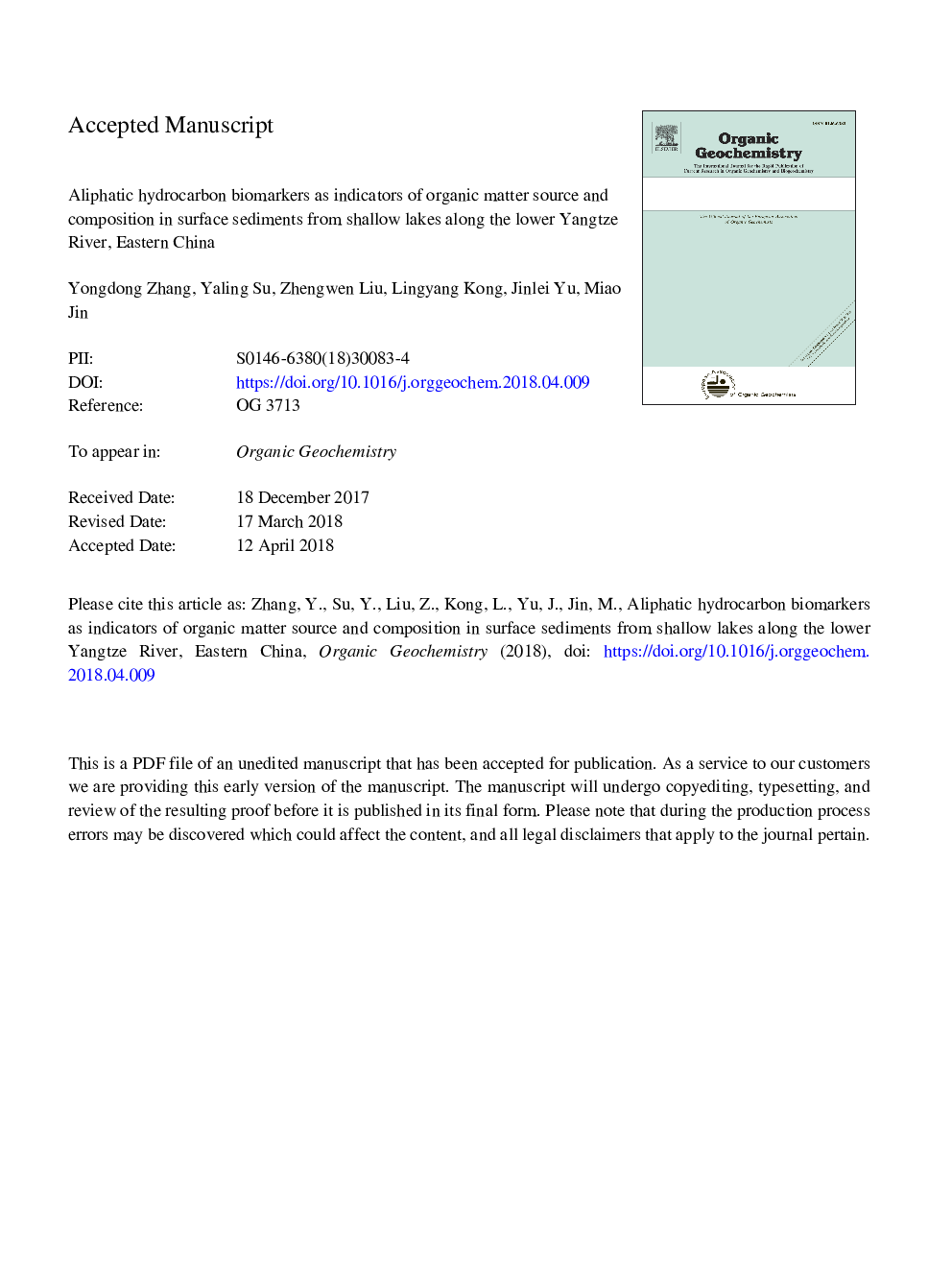| کد مقاله | کد نشریه | سال انتشار | مقاله انگلیسی | نسخه تمام متن |
|---|---|---|---|---|
| 7816887 | 1502241 | 2018 | 41 صفحه PDF | دانلود رایگان |
عنوان انگلیسی مقاله ISI
Aliphatic hydrocarbon biomarkers as indicators of organic matter source and composition in surface sediments from shallow lakes along the lower Yangtze River, Eastern China
ترجمه فارسی عنوان
بیومارکرهای آلیفاتیک هیدروکربن به عنوان شاخص های مواد منبع آلی و ترکیب در رسوبات سطحی از دریاچه های کم عمق در امتداد رودخانه یانگ تسه پایین چین شرقی
دانلود مقاله + سفارش ترجمه
دانلود مقاله ISI انگلیسی
رایگان برای ایرانیان
کلمات کلیدی
بیومارکر، رسوب، پایین تر از رودخانه یانگ تسه، مواد ارگانیک، دریاچه،
موضوعات مرتبط
مهندسی و علوم پایه
شیمی
شیمی آلی
چکیده انگلیسی
Aliphatic hydrocarbon biomarkers from the surface sediments of lakes along the lower reaches of the Yangtze River (Eastern China) were analyzed in order to determine the origin and composition of organic matter (OM) in the sediment. This is necessary to understand how anthropogenic environmental change in the region is impacting on OM dynamics and carbon cycles. The results indicate that OM in lake sediments is derived from biogenic sources, including phytoplankton, aquatic macrophytes, bacteria and terrestrial plants and abiotic sources of petroleum hydrocarbon contamination. The significance of each source varies greatly between lakes. Inputs of autochthonous OM to sediments were closely dependent on nutrient levels and the organisms present in the lake water column. Cyanobacterial OM input, signified by the distribution of short-chain n-alkanes, was most abundant in sediments from the most severely polluted lake, West Lake Chaohu. OM derived from diatoms, indicated by C25 highly branched isoprenoids (HBIs), was relatively abundant in sediments from lakes Gucheng and Shijiu, the two studied lakes with the lowest nutrient levels. Growth of macrophytes in lakes Gucheng, Shijiu, Gehu and Yangcheng resulted in a significant accumulation of OM from these organisms in the sediments. In contrast, the input of allochthonous OM was controlled mainly by natural and anthropogenic activities around the lakes. For example, terrestrial plant OM input, deduced from the abundance and proportion of long-chain n-alkanes, was exceptionally high in the sediment of Lake Nanyi, perhaps stemmed from frequent severe flooding in the catchment. Input of fossil fuel OM reflected direct petroleum contamination of the water or anthropogenic petroleum burning in the catchment. In addition, the allochthonous refractory OM tended to be enriched in sediments of lakes with strong hydrodynamic process. The results of this study provided a lot of detail in explaining the variation of terrestrial OM dynamics and carbon cycle in response to anthropogenic activities.
ناشر
Database: Elsevier - ScienceDirect (ساینس دایرکت)
Journal: Organic Geochemistry - Volume 122, August 2018, Pages 29-40
Journal: Organic Geochemistry - Volume 122, August 2018, Pages 29-40
نویسندگان
Yongdong Zhang, Yaling Su, Zhengwen Liu, Lingyang Kong, Jinlei Yu, Miao Jin,
